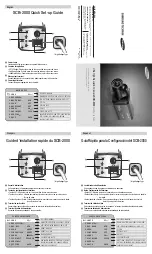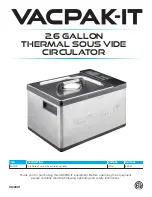
Chapter 3 - Payload Sensors
TM00358 Rev. A
October 2007
L-3 WESCAM
58
All Rights Reserved
•
For hot operation, the sensor will shutdown above 70°C and not restart until 60°C.
•
For cold starts below -0°C, the sensor will not operate until it has been warmed.
Operator’s have the capability to control the following imaging parameters:
•
Sensitivity
•
Filters
•
Initiate a BIT
Sensitivity.
Controls the amount of light exposure to the camera CCD. The control is similar to the brightness
control on a television or monitor. However, the system makes proportional adjustments to three parameters:
•
lens’s iris opening
•
digital shutter speed
•
electronic gain
To control light use, operators can utilize either an Auto or Manual mode. In Auto mode, the system automatically
controls image brightness to maintain video quality over a range of light levels. In Manual mode, operators can
manually change brightness by making stepped adjustments to the sensitivity increment. The brightness range can
be adjusted between:
•
least sensitivity, i.e. smallest iris opening, shortest shutter speed, and minimum electronic gain.
•
most sensitivity, i.e. largest iris opening, longest shutter speed, and maximum electronic gain.
Filters.
Selects range of light wavelength to extend viewing into a near infrared range. There are two filter positions:
•
COL – restrictive pass filter to transmit visible spectrum only
•
NIR – all pass filter to transmit near infrared range
3.2.2 IR Sensor
The infrared (IR) sensor is a thermographic imaging camera that outputs monochromatic video. This sensor forms
an image using infrared light much like a digital camera forms an image except using visible light. Instead of
measuring light in the visible spectrum wavelength range (450–750 nm), the IR sensor is sensitive to the mid-
infrared wavelength range (3.4–5.2 µm). The sensor consists of 2 main parts:
•
camera
•
a stepped zoom lens
Table 3-2 IR Lens Capabilities
Designation
Focal Length
Field of View
Minimum Focus
Distance
WFOV
27 mm
26.67°
<3m (<10 ft)
MFOV
135 mm
5.43°
<12.2m (<40 ft)
NFOV
675 mm
1.09°
<243.8m (<800 ft)
VNFOV
2024 mm*
0.36°
<243.8m (<800 ft)
*Optical focal length is 1012 mm. Apparent focal length achieves
2024 mm
when a 2x electronic zoom is applied















































